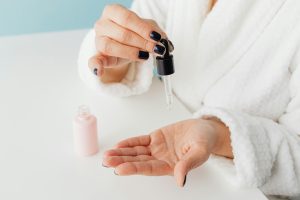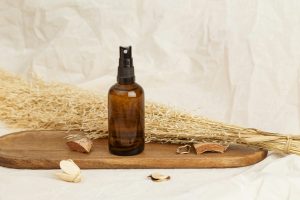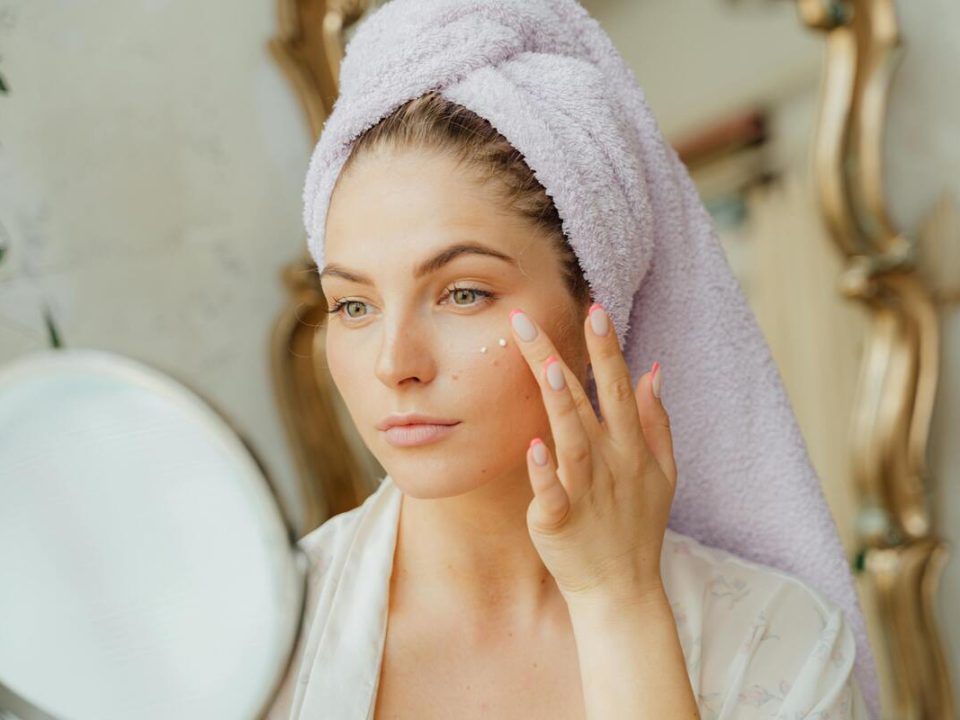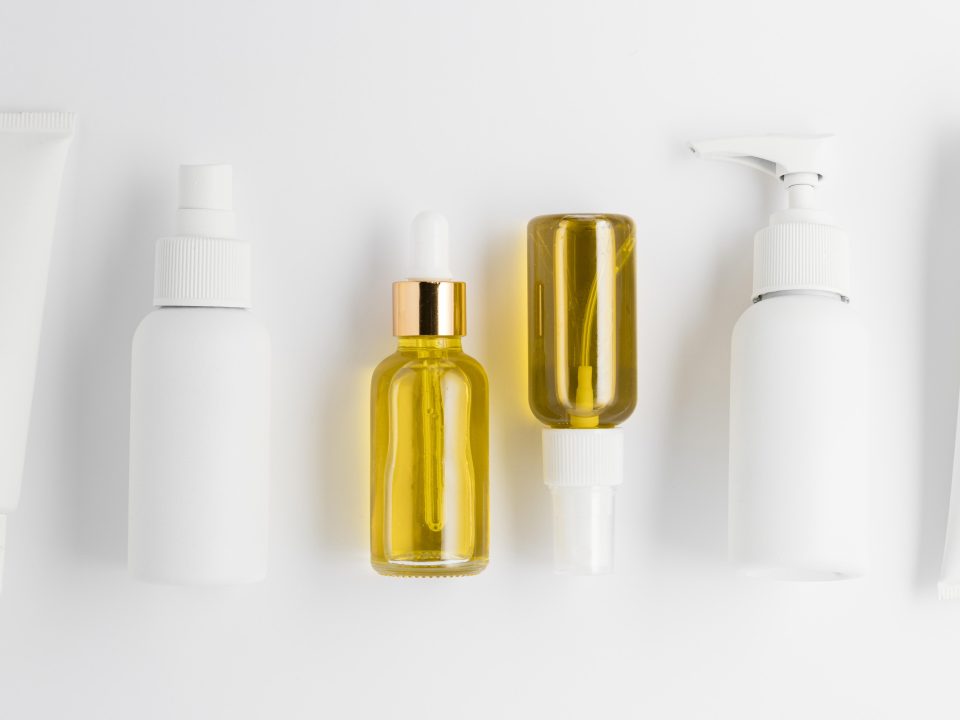
Is Salicylic Acid Good For Oily Skin?
March 7, 2024
How To Correctly Use Lactic Acid?
May 9, 2024Acne. It’s a word that evokes groans and sighs from people of all ages. While often associated with teenage years, acne can plague individuals throughout their lives, impacting confidence and self-esteem. Thankfully, various treatments exist to combat this frustrating skin condition, and salicylic acid is a popular name among them. But is it truly the hero in the fight against acne, or is there more to the story?
Salicylic Acid in Action: Friend or Foe?
Salicylic acid, with its unique ability to exfoliate and regulate oil production, offers promising benefits for specific types of acne. However, understanding its limitations and potential side effects is crucial before deciding if it’s the right “friend” for your skin in the fight against breakouts.
Benefits for Acne: Targeted Action
Salicylic acid shines brightest when tackling non-inflammatory acne, specifically:
Blackhead and Whitehead Buster:
Clogged Pores, Unclogged Solutions: Blackheads and whiteheads, also known as comedones, form when dead skin cells and sebum (oil) become trapped within the pores. Blackheads appear open due to the oxidation of sebum on the surface, while whiteheads remain closed.
Exfoliating Powerhouse: Salicylic acid, belonging to the beta hydroxy acid (BHA) family, works by dissolving the “glue” that binds dead skin cells together. This allows the trapped sebum and dead skin cells to be shed more easily, clearing the pathway within the pore and preventing future blockages.
Promoting Cell Turnover: By encouraging the removal of dead skin cells, salicylic acid also helps promote cell turnover. This process brings fresh, healthy skin cells to the surface, facilitating the resurfacing of whiteheads and preventing their formation.
Oil-Regulating Effect: Beyond its exfoliating properties, salicylic acid also possesses a mild sebum-regulating effect. It can help break down existing sebum and potentially regulate sebaceous gland activity, further reducing the chance of clogged pores and the development of comedones.
Mild Acne Ally: Offering Support, Not a Cure-All
Salicylic acid may offer some benefits for mild inflammatory acne, characterized by papules (red bumps) and pustules (white pus-filled bumps). However, it’s important to understand its limitations:
Indirect Anti-inflammatory Action: While not its primary function, some studies suggest salicylic acid may possess mild anti-inflammatory properties. This could potentially help reduce the redness and swelling associated with papules, offering some relief for individuals with mild inflammatory acne.
Creating an Unfavorable Environment: By keeping pores clear of excess oil and dead skin cells, salicylic acid indirectly creates a less favorable environment for acne-causing bacteria like P. acnes to thrive. This can contribute to reducing the overall inflammatory response and promote healing of mild inflammatory acne lesions.
However, it’s important to remember that salicylic acid’s effectiveness for inflammatory acne is generally considered mild to moderate. It might not be sufficient for individuals struggling with moderate to severe inflammatory acne. These individuals should seek professional guidance from a dermatologist to explore other treatment options like prescription-strength medications or professional procedures.
Potential Drawbacks: Knowing the Other Side of the Coin
While salicylic acid boasts benefits for certain types of acne, it’s crucial to acknowledge its potential drawbacks and side effects before incorporating it into your skincare routine:
Irritation and Dryness: A Delicate Balance Disrupted
Salicylic acid, as an exfoliant, can disrupt the delicate balance of the skin’s natural barrier. This can lead to dryness, especially for individuals with already dry or sensitive skin. Additionally, some individuals might experience:
Stinging or burning sensation: This is often temporary and usually subsides with regular use. However, if it persists for more than a few days or becomes unbearable, discontinue use and consult a dermatologist.
Redness: Mild redness may occur, especially when starting a new salicylic acid product. This is usually a sign of skin adjustment and might improve with continued use. However, if the redness intensifies, spreads, or persists for more than a week, discontinue use and consult a dermatologist.
Flaking: In some cases, salicylic acid can cause mild flaking, particularly during the initial stages of use. This is usually temporary and can be addressed with proper hydration.
To minimize the risk of irritation and dryness:
Start low, go slow: Begin with a low concentration of salicylic acid (1-2%) and apply it once every other day. Gradually increase the frequency and concentration as your skin tolerates it.
Moisturize religiously: Apply a fragrance-free, gentle moisturizer daily, even if your skin feels oily. This helps replenish the skin’s natural moisture barrier and prevent excessive dryness.
Patch test: Before applying any new product, especially on your face, perform a patch test on a small area of your inner arm. This helps identify any potential allergic reactions before using it on your entire face.
Sun Sensitivity: Increased Vulnerability
Salicylic acid can increase the skin’s sensitivity to ultraviolet (UV) rays from the sun. This is because it can thin the outermost layer of the skin (stratum corneum), making it more vulnerable to sunburn and potentially accelerating signs of aging, such as wrinkles and hyperpigmentation. To counteract this:
Apply sunscreen diligently: Make sunscreen a non-negotiable part of your daily skincare routine, regardless of the weather. Use a broad-spectrum sunscreen with SPF 30 or higher every day, even on cloudy days.
Reapply frequently: Reapply sunscreen every two hours, or more often if you sweat excessively or swim.
Limit sun exposure: Seek shade whenever possible, especially during peak sun hours (10 am to 4 pm).
Consider alternative forms: Opt for salicylic acid products formulated with sun-protecting ingredients, such as zinc oxide or titanium dioxide, which offer additional sun protection.
Limited Efficacy for Severe Acne: Recognizing Its Limits
While salicylic acid can be a helpful tool for mild to moderate acne, it may not be sufficient for individuals struggling with severe acne, characterized by deep, painful nodules and cysts. This is because:
Limited penetration: Salicylic acid primarily works on the surface and upper layers of the skin (epidermis and upper dermis). However, severe acne lesions often involve deeper layers (deeper dermis), requiring more potent ingredients or treatment modalities that can penetrate deeper into the skin.
Antimicrobial limitations: While salicylic acid may indirectly affect bacterial growth by keeping pores clear, its primary action is not directly targeting the bacteria (P. acnes) responsible for severe acne. Therefore, it may not be effective enough to address the underlying cause of severe acne breakouts.
If you are experiencing severe acne:
Consulting a dermatologist is essential. They can assess the severity of your acne, identify the underlying cause, and recommend a personalized treatment plan that may include:
Prescription-strength medications: These medications, like topical retinoids or antibiotics, can target specific factors contributing to severe acne and offer more potent results than OTC options.
Other treatment modalities: Depending on the severity and type of acne, a dermatologist might recommend procedures like extractions, light therapy, or injections to address deep-seated lesions and scarring.
Understanding both the benefits and drawbacks of salicylic acid empowers you to make informed decisions about incorporating it into your skincare routine. Always remember, if you experience any persistent or concerning side effects, discontinue use and seek professional guidance from a dermatologist. They can help you explore alternative treatment options and ensure you receive the most appropriate care for your specific needs.
Unveiling Salicylic Acid: A Chemical Warrior
The Everlasting Battle with Acne
Acne vulgaris, commonly known as acne, is a skin condition that plagues millions of individuals worldwide, regardless of age, gender, or ethnicity. It manifests as blackheads, whiteheads, papules, pustules, nodules, and cysts, often leaving emotional and physical scars. The desire for clear, healthy skin is a natural human pursuit, leading individuals to explore a wide range of treatments, both over-the-counter (OTC) and prescription-strength. Among these options, salicylic acid occupies a prominent position, touted for its potential to combat blemishes. But what exactly is salicylic acid, and how does it wage war against acne?
Understanding the Science: A Multi-pronged Approach
Salicylic acid, a beta hydroxy acid (BHA), is a hero with two powerful weapons in its arsenal: exfoliation and oil control. Unlike alpha hydroxy acids (AHAs) that primarily work on the skin’s surface, BHAs, like salicylic acid, possess a unique oil-soluble property. This allows them to penetrate deeper into the pores, reaching the root cause of many acne concerns. Let’s delve deeper into how each of these weapons aids in the battle against acne:
Exfoliation Powerhouse: Dissolving the Sticky Situation
Imagine your skin like a busy highway. Dead skin cells are like abandoned cars, piling up and creating congestion. This congestion can block the “lanes” of your pores, trapping sebum (oil) and creating the perfect environment for acne-causing bacteria to thrive. Salicylic acid acts like a skilled tow truck, dissolving the “glue” holding these dead skin cells together. This gentle yet effective exfoliation process allows the unwanted debris to be swept away, preventing pore blockage and ultimately, reducing the development of acne.
Here’s a closer look at the science behind this exfoliating power:
Keratinocyte cohesion: The “glue” holding dead skin cells together is primarily composed of proteins called corneodesmosomes. Salicylic acid disrupts the bonds within these structures, allowing the dead skin cells to shed more easily.
Increased cell turnover: Salicylic acid can also stimulate the natural process of cell turnover, encouraging the skin to shed dead cells at a faster rate. This helps to keep pores clear and prevent build-up.
Oil Control: Taming the Greasy Culprit
Sebum, an oil produced by the sebaceous glands, is essential for healthy skin hydration. However, excess sebum production can contribute to acne formation. Salicylic acid, with its oil-soluble nature, can penetrate the sebum within the pores, breaking it down and preventing it from clogging the pathway. This reduces the overall oiliness of the skin, creating a less hospitable environment for acne-causing bacteria.
The oil-busting mechanism of salicylic acid can be broken down into two key steps:
Sebum breakdown: Salicylic acid possesses a mild keratolytic (dissolving) effect on sebum, breaking down the fatty components clogging the pores.
Reduced sebum production: Studies suggest that salicylic acid may also have a regulatory effect on sebaceous glands, potentially leading to a decrease in overall sebum production.
By simultaneously promoting exfoliation and controlling oil, salicylic acid offers a multifaceted approach to acne management. However, it is crucial to remember that like any weapon, salicylic acid has its limitations and potential side effects. We will explore these aspects in the following sections to gain a comprehensive understanding of this widely used acne-fighting ingredient.
Beyond the Bottle: Comparing Treatment Options
The journey to clear skin often requires exploring various treatment options, each wielding its strengths and weaknesses. While salicylic acid holds promise for specific acne concerns, understanding its position in the broader landscape is crucial.
The Battle Royale: Salicylic Acid vs. Benzoyl Peroxide
Another powerful contender in the acne-fighting arena is benzoyl peroxide. Like salicylic acid, it’s a popular OTC ingredient available in various cleansers, lotions, and spot treatments. However, their mechanisms of action and target types differ:
Mechanism of Action: Deciphering the Weapons
Salicylic Acid: As discussed previously, salicylic acid primarily acts as an exfoliant and oil-regulator. It unclogs pores by dissolving pore-blocking debris and helps manage sebum production, creating a less favorable environment for acne-causing bacteria.
Benzoyl Peroxide: This ingredient takes a different approach, directly targeting the root cause of acne – P. acnes bacteria. Benzoyl peroxide releases oxygen molecules that have a bactericidal effect, killing these bacteria and reducing their ability to thrive.
Target Types: Choosing the Right Weapon for the Right Foe
Both salicylic acid and benzoyl peroxide are effective for acne, but they excel against different types:
Salicylic Acid: This warrior shines brightest against non-inflammatory acne, particularly blackheads and whiteheads, due to its ability to clear clogged pores. It may offer some benefit for mild inflammatory acne (papules and pustules), but its effectiveness is limited compared to other options.
Benzoyl Peroxide: This fighter is particularly effective against inflammatory acne, including papules, pustules, and even nodules. Its direct antibacterial action effectively targets the bacteria responsible for these types of acne lesions.
Choosing Your Weapon: Tailoring the Fight to Your Needs
Selecting the optimal weapon in this battle depends on several factors:
Acne Type: If you primarily struggle with blackheads, whiteheads, or mild papules/pustules, salicylic acid might be a good first-line option. However, for moderate to severe inflammatory acne, benzoyl peroxide might be more effective.
Skin Sensitivity: Both ingredients can potentially cause dryness and irritation. If you have sensitive skin, salicylic acid might be the gentler option, but starting with a low concentration and gradually increasing is recommended. Benzoyl peroxide can be harsher and is generally not recommended for highly sensitive skin.
Desired Results: If you need a fast-acting spot treatment for occasional breakouts, benzoyl peroxide might be a better choice due to its immediate antibacterial effect. However, for long-term maintenance and preventing future breakouts, salicylic acid might be preferable due to its ability to promote cell turnover and unclog pores.
Remember, this is not a “one size fits all” situation. Consulting a dermatologist can help you determine the best treatment option based on your individual needs and skin type.
Can They Coexist on the Battlefield?
While both salicylic acid and benzoyl peroxide are effective for acne, combining them on the same area is generally not recommended. This is because:
Increased Irritation: Both ingredients can be drying and irritating. Using them together significantly increases the risk of experiencing excessive dryness, redness, and even peeling, potentially damaging your skin barrier.
Redundancy: For mild acne, salicylic acid might already provide sufficient benefits. Adding benzoyl peroxide might be unnecessary and potentially irritating. For moderate to severe acne, a dermatologist might recommend a prescription-strength medication instead of combining OTC options.
Exploring Other Avenues: Beyond the OTC Battlefield
For individuals struggling with severe acne, venturing beyond OTC options is often necessary. Here are some additional treatment avenues to consider, always with the guidance of a dermatologist:
Prescription-strength medications: These medications come in various forms like topical retinoids, antibiotics, and oral medications tailored to target specific types and severities of acne.
Retinoids: Unlike the exfoliating action of salicylic acid, retinoids work by promoting cell turnover and regulating skin cell production, preventing clogged pores and inflammation.
Professional treatments: Depending on the severity and type of acne, a dermatologist might recommend procedures like extractions, light therapy, or chemical peels to address deep-seated lesions and scarring.
The Final Verdict: Is Salicylic Acid Your Acne Savior?
After delving into the science and limitations of salicylic acid, it’s time to ponder the ultimate question: is it truly the hero in the fight against your acne? The answer, like most things in skincare, is not a simple yes or no. It depends on a multifaceted assessment of your individual needs and the specific acne concerns you face.
Weighing the Evidence: Balancing the Scales
Benefits:
Effective for non-inflammatory acne: Salicylic acid excels in clearing blackheads and whiteheads by tackling the root cause – clogged pores.
Potential for mild inflammatory acne: It may offer some benefit for mild papules and pustules through its indirect antibacterial effect and potentially mild anti-inflammatory properties.
Over-the-counter accessibility: Salicylic acid is readily available in various forms like cleansers, lotions, and spot treatments, making it a convenient and affordable option for many.
Exfoliating properties: Beyond acne, salicylic acid can promote smoother, brighter skin by removing dead skin cells and encouraging cell turnover.
Drawbacks:
Potential for irritation and dryness: Especially for sensitive skin, salicylic acid can cause dryness, stinging, and redness.
Increased sun sensitivity: Using salicylic acid requires diligent sunscreen use to minimize the risk of sunburn and premature aging.
Limited efficacy for severe acne: For deep-seated, inflammatory acne, salicylic acid’s effects might be insufficient, requiring stronger interventions.
Not a cure-all: Like any acne treatment, salicylic acid requires consistent use and realistic expectations to see results.
Individualized Approach: Tailoring the Solution to You
While we’ve explored the general benefits and drawbacks of salicylic acid, it’s essential to remember that acne is a multifaceted issue. Deciding if salicylic acid is the “right fit” for you depends on several individual factors:
Skin type: If you have dry or sensitive skin, salicylic acid might be too harsh. Opting for gentler options or consulting a dermatologist is crucial.
Acne severity: For mild, non-inflammatory acne, salicylic acid might be a great starting point. However, for moderate to severe acne, it’s best to seek professional guidance and explore potentially stronger prescription-strength medications or specialized treatments.
Existing skincare routine: If you already use other products containing exfoliating or drying ingredients, combining them with salicylic acid might increase the risk of irritation. It’s crucial to assess compatibility within your overall skincare regimen.
Personalizing your approach is key to successfully managing acne. Experimenting with salicylic acid under professional guidance and carefully monitoring your skin’s response is crucial.
Consulting the Experts: Seeking Professional Guidance
While salicylic acid can be a helpful tool for specific types of acne, its limitations highlight the importance of seeking professional guidance from a dermatologist, especially in the following situations:
Persistent or worsening acne: If your acne doesn’t improve after trying OTC options for several weeks, or if it worsens, consulting a dermatologist is essential. They can assess the severity and type of your acne and recommend a personalized treatment plan.
Severe acne: For individuals struggling with severe acne characterized by deep nodules, cysts, or significant scarring, professional intervention is crucial. Dermatologists have access to a wider range of treatments, including prescription-strength medications, which can be more effective in tackling these concerns.
Complexities or uncertainties: If you have concerns about your skin type, existing medical conditions, or potential interactions with other medications, consulting a dermatologist is always the safest approach.
Dermatologists possess the expertise to:
Diagnose the type and severity of your acne accurately.
Develop a tailored treatment plan based on your individual needs and skin type.
Monitor your progress and adjust the treatment plan as needed.
Offer guidance on proper skincare practices to complement your treatment.
Conclusion
The pursuit of clear skin goes beyond simply battling breakouts with topical treatments like salicylic acid. While effective for specific concerns, achieving long-lasting results often requires a holistic approach that incorporates healthy lifestyle habits alongside a well-rounded skincare routine.
Beyond the Product: Cultivating a Healthy Foundation
Diet: Maintaining a balanced diet rich in fruits, vegetables, and whole grains provides your body with the essential nutrients it needs for optimal skin health. Limiting processed foods, sugary drinks, and excessive dairy consumption may also contribute to clearer skin, as some studies suggest a potential link between these dietary choices and acne.
Stress Management: Chronic stress can exacerbate acne by triggering the release of hormones like cortisol, which can stimulate oil production and worsen inflammation. Techniques like meditation, yoga, or regular exercise can help manage stress levels, potentially reducing their impact on your skin.
Proper Hygiene: Maintaining proper hygiene practices is crucial for preventing clogged pores and managing acne. This includes washing your face twice daily with a gentle cleanser, avoiding harsh scrubbing, and changing your pillowcase regularly to minimize bacterial build-up.
Patience is Key: Building Consistency for Lasting Results
Remember, achieving clear skin is a marathon, not a sprint. Like any treatment, salicylic acid and other acne-fighting strategies require consistency to be effective.
Gradual introduction: When starting a new product like salicylic acid, begin with a low concentration and apply it gradually to assess your skin’s tolerance. This helps minimize the risk of irritation and allows your skin to adjust.
Realistic expectations: Don’t expect overnight results. It generally takes 4-8 weeks of consistent use to see noticeable improvement with most acne treatments.
Maintain your routine: Even when your skin appears clear, continue using your acne-fighting products as directed by your dermatologist or as recommended by the product instructions. This helps prevent breakouts from recurring.
A Journey, Not a Destination: Embracing the Continuous Pursuit of Healthy Skin
Acne management is often an ongoing process, requiring patience and sustained effort. Here are some encouraging thoughts to keep you motivated:
Celebrate progress: Acknowledge and celebrate even small improvements in your skin’s clarity. This positive reinforcement can help you stay motivated on your journey.
Seek support: Talk to a dermatologist or a trusted friend or family member for support and guidance. Sharing your experiences can help you feel less alone and provide valuable insights.
Focus on self-care: Prioritize your overall well-being by getting adequate sleep, staying hydrated, and engaging in activities you enjoy. Taking care of yourself from the inside out contributes not only to clearer skin but also to your overall health and happiness.
Remember, you are not alone in your quest for clear skin. By embracing a multi-faceted approach, incorporating salicylic acid strategically when applicable, and seeking professional guidance when needed, you can navigate your unique journey towards achieving and maintaining healthy, radiant skin.








